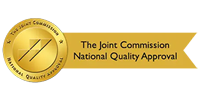It is considered a part of typical pre-adolescent development for young people to experience bouts of panic during their youth.
However, the sudden onset of recurring panic attacks that occur spontaneously and without cause is atypical and may indicate panic disorder.
The Mayo Clinic defines a panic attack as “a sudden episode of intense fear that triggers severe physical reactions when there is no real danger or apparent cause.” Panic disorder is classified as an anxiety disorder in the Diagnostic and Statistical Manual of Mental Disorders, Fifth Edition (DSM-5). As Anxiety & Depression Association of America (ADAA) explains, panic disorder “is diagnosed in people who experience spontaneous seemingly out-of-the-blue panic attacks and are very preoccupied with the fear of a recurring attack.” Gaining the ability to recognize the warning signs of a panic attack is fundamental to providing a preteen with effective support in navigating a panic attack.
Signs & Symptoms
A panic attack is classified when a young experiences four or more of the following symptoms simultaneously, as provided by ADAA:
- Excessive sweating.
- Fear of dying.
- Chest pain.
- Dizziness.
- Chills.
- Heart palpitations.
- Light-headedness.
- Nausea.
- Feelings of choking.
- Trembling.
- Tingling sensations and/ or numbness.
- Fear of losing control.
- Difficulty catching one’s breath.
- Excessive shaking and/ or shivering.
- Abdominal distress.
- Accelerated heart rate.
Panic attacks can range in severity and duration. Different triggers can initiate panic attacks in different preteenagers. Usually, panic attacks are short-lived, but the quick onset and the intense symptoms can leave a young person experiencing residual effects of anxiety hours after a panic attack has ended.
How To Help
It can be highly unnerving to watch a preteen experience a panic attack. Fortunately, there are several tips that can help you can help a preteenager learn to cope with his or her panic attacks. Consider the following:
- Name what is occurring in the moment: Many young people experiencing panic attacks are confused, scared and unsure if the symptoms of the panic attack will ever subside.
- Remain calm: Allowing a preteenager to see that you are calm can be both deescalating and reassuring.
- Breathe: Facilitate breathing exercises to help pull focus away from their symptoms and onto their breath.
- Acknowledge their feelings: If a young person shares how they are feeling during a panic attack, validating their perspective can help them feel less alone and supported.
- Guide them out of their panic: Focusing on the five senses is an effective grounding technique. A quick way to bring one’s attention to the present moment is to actively engage all five senses. Try this by naming 5 things you can see, 4 things you can feel, 3 things you can hear, 2 things you can smell, and 1 thing you can taste.
Further Information and Support
For most of us, life can be very stressful, leading us to feel emotionally charged, which can cause anxiety, panic attacks, depression, and getting stuck in a cycle of being burdened with negative thoughts. Navigating through the challenges and emotional turmoil of life can be overwhelming, but you do not have to go through it alone. Engage Treatment is a Joint Commission Accredited professional psychological practice. We specialize in treating children, teens, and young adults struggling with depression and anxiety through community-focused treatment plans that incorporate a carefully selected combination of therapeutic interventions. Our compassionate, multidisciplinary practitioners are devoted to providing the highest quality of care that helps ignite positive change and enables clients to reach optimal health and well-being. Please do not hesitate to reach out for guidance. We are happy to answer questions and provide you with any additional information. Feel free to call us at 805-497-0605 or email us at [email protected]. You are also welcomed to get in touch by filling out our contact form. We look forward to connecting and having the opportunity to discuss how we might best be able to support you.
Contact Us
Westlake Campus:
IOP Program
2625 Townsgate Road, Suite 210
Westlake Village, California 91361
Agoura Campus:
Private Therapy & Parenting Program
30300 Agoura Road, Suite 250
Agoura Hills, CA 91301
805-497-0605
805-371-4862











© 2023 Engage Treatment Program, Inc. All Rights Reserved.
LGBTQ Friendly
About
• About Engage
• Our Team
• Career Opportunities
• Individual / Family Therapy






